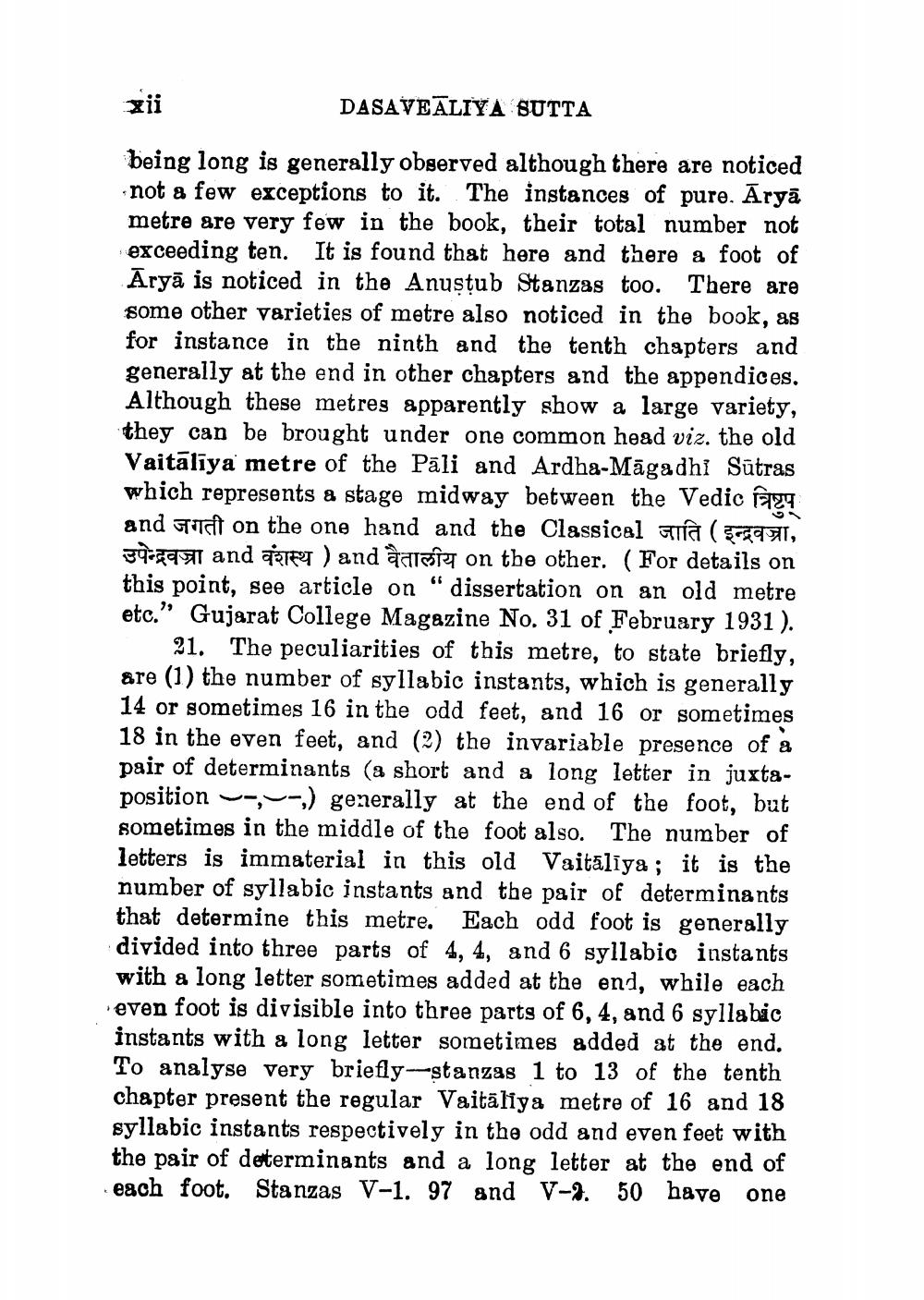________________
xii
DASAVEALIYA SUTTA
being long is generally observed although there are noticed not a few exceptions to it. The instances of pure. Arya metre are very few in the book, their total number not exceeding ten. It is found that here and there a foot of Arya is noticed in the Anustub Stanzas too. There are some other varieties of metre also noticed in the book, as for instance in the ninth and the tenth chapters and generally at the end in other chapters and the appendices. Although these metres apparently show a large variety, they can be brought under one common head viz. the old Vaitālīya metre of the Pali and Ardha-Magadhi Sutras which represents a stage midway between the Vedic f and जगती on the one hand and the Classical जाति ( इन्द्रवज्रा, उपेन्द्रवज्रा and वंशस्थ ) and वैतालीय on the other. ( For details on this point, see article on dissertation on an old metre etc." Gujarat College Magazine No. 31 of February 1931).
66
21. The peculiarities of this metre, to state briefly, are (1) the number of syllabic instants, which is generally 14 or sometimes 16 in the odd feet, and 16 or sometimes 18 in the even feet, and (2) the invariable presence of a pair of determinants (a short and a long letter in juxtaposition) generally at the end of the foot, but sometimes in the middle of the foot also. The number of letters is immaterial in this old Vaitālīya; it is the number of syllabic instants and the pair of determinants that determine this metre. Each odd foot is generally divided into three parts of 4, 4, and 6 syllabic instants with a long letter sometimes added at the end, while each even foot is divisible into three parts of 6, 4, and 6 syllabic instants with a long letter sometimes added at the end. To analyse very briefly-stanzas 1 to 13 of the tenth chapter present the regular Vaitaliya metre of 16 and 18 syllabic instants respectively in the odd and even feet with the pair of determinants and a long letter at the end of each foot. Stanzas V-1. 97 and V-9. 50 have one




